The 5″ x 8″ (interior dimensions) tree nest hole of the Williamson’s Sapsucker with as many as 6 growing nestlings inside presents a significant potential hygiene problem. This post is about how the adults dealt with that situation as I was photographing them about three weeks ago near the Montana/Idaho border.
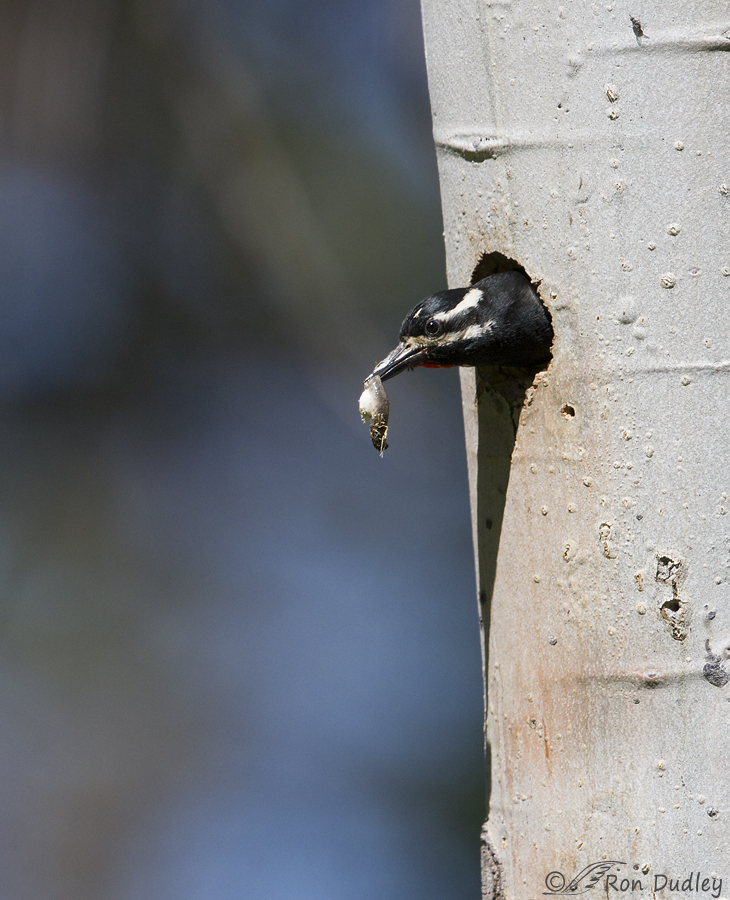
1/4000, f/5.6, ISO 640, Canon 7D, Canon EF500mm f/4L IS II USM, not baited, set up or called in
A layer of wood chips at the bottom of the nest chamber serves as a bed for the eggs. When they hatch excreta from the chicks soaks the chips and they must be removed regularly. I often heard the adults inside the nest as they excavated more wood shavings that improve sanitation by soaking up more fecal material. As the chicks become older they produce gelatinous fecal sacs which also must be removed.
Here the male is about to leave the nest with a fecal sac.
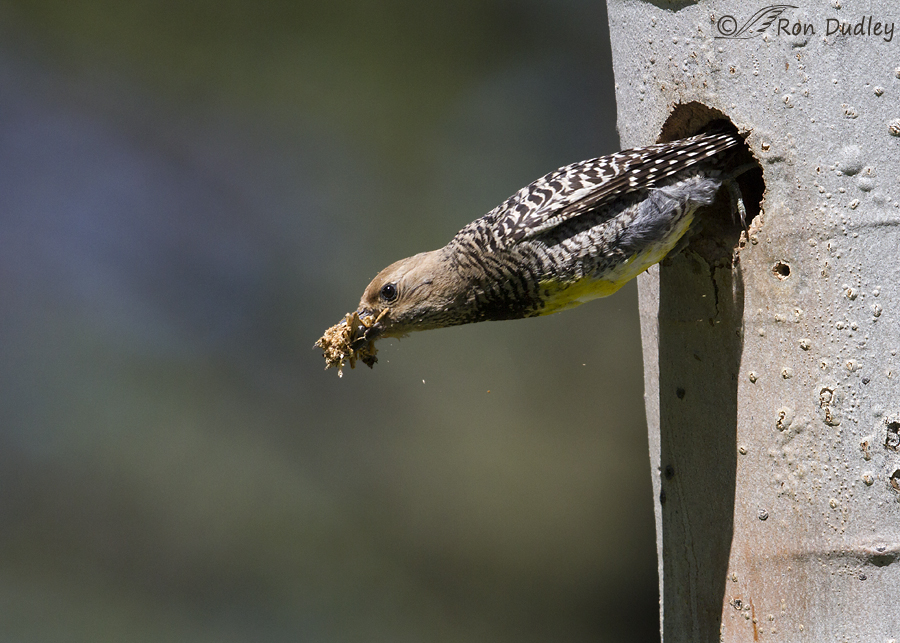
1/3200, f/7.1, ISO 640, Canon 7D, Canon EF500mm f/4L IS II USM, not baited, set up or called in
The female also contributes to the sanitation regimen. In this image she is removing soaked wood chips.
1/2000, f/6.3, ISO 800, Canon 7D, Canon EF500mm f/4L IS II USM, not baited, set up or called in
Often the adults had both fecal sacs and wood chips in their bills as they left the nest after delivering ants to the chicks.
1/25000, f/6.3, ISO 800, Canon 7D, Canon 100-400 @ 370mm, not baited, set up or called in
Here the male is doing the same thing.
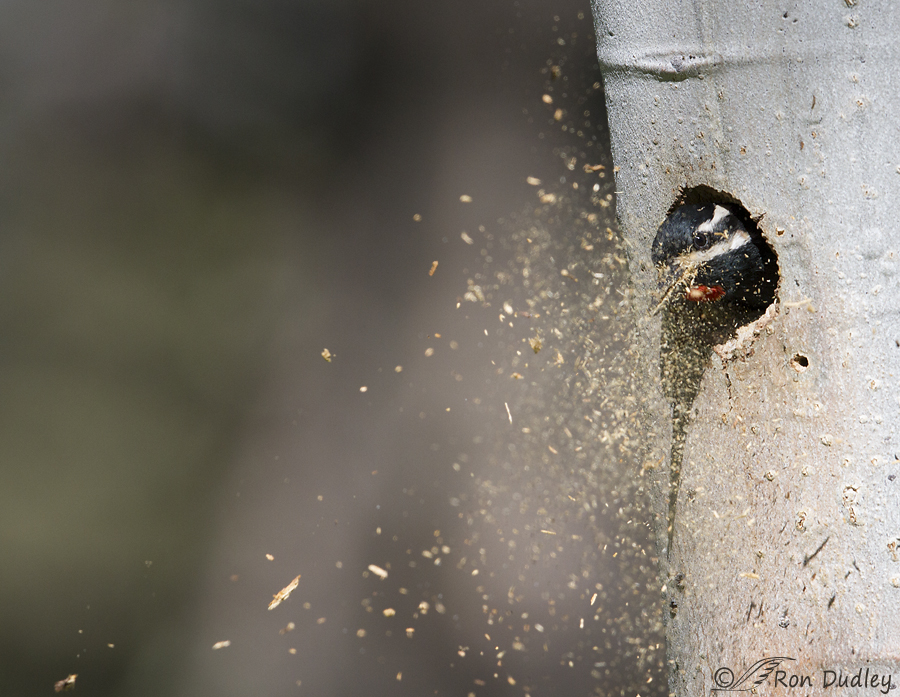
1/2000, f/6.3, ISO 640, Canon 7D, Canon EF500mm f/4L IS II USM, not baited, set up or called in
When only wood chips were involved (no fecal sac) the male in particular would often simply stick his head outside the hole and shake vigorously which sent the chips flying to the ground beneath the nest.
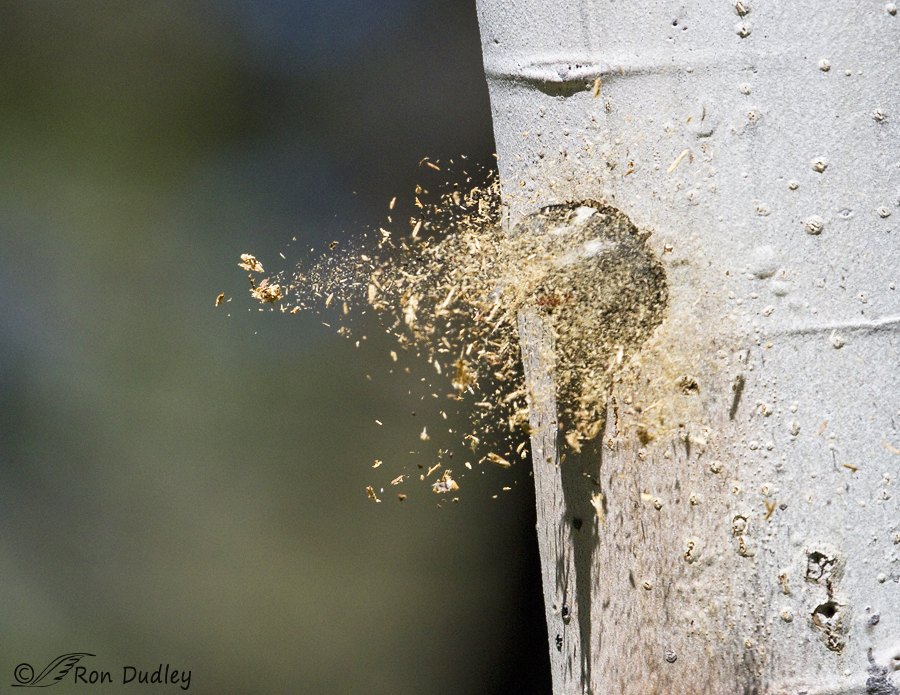
1/5000, f/7.1, ISO 640, Canon 7D, Canon EF500mm f/4L IS II USM, not baited, set up or called in
At times they were so thick that they obscured both him and the hole but he could be seen more clearly…

1/5000, f/7.1, ISO 640, Canon 7D, Canon EF500mm f/4L IS II USM, not baited, set up or called in
as the chips fell away.
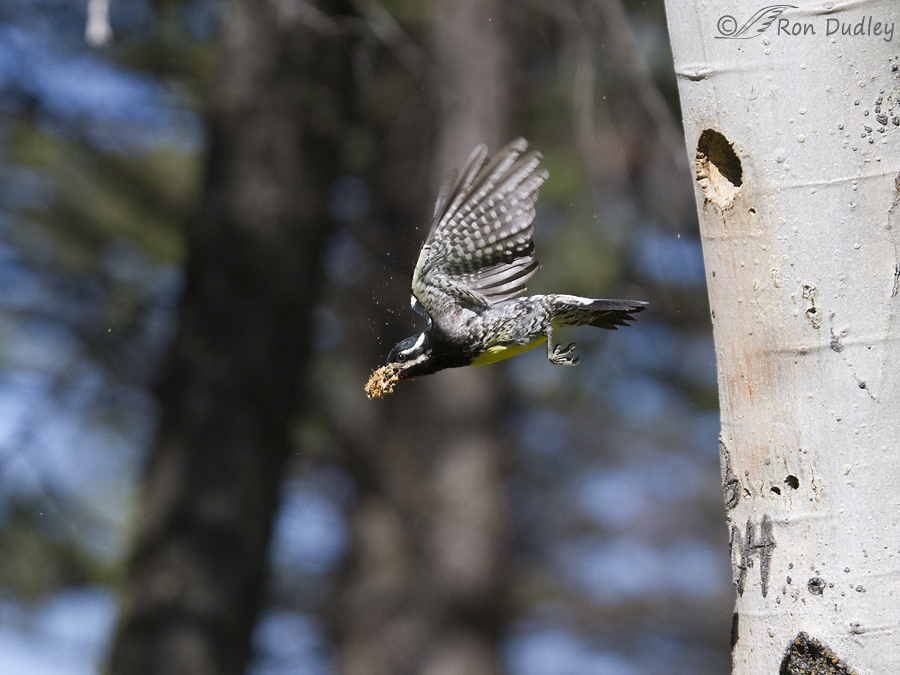
1/3200, f/6.3, ISO 800, Canon 7D, Canon 100 – 400 @ 235mm, not baited, set up or called in
A shot taken with my smaller lens as the male left the nest hole with a load of wood chips provides a better look at the overall setting.
The mix of dark trees and bright blue sky in the background combined with constantly changing light on the nest-tree was a real exposure challenge for this photographer but it was great fun spending time with these birds and the difficult conditions made for an excellent (though frustrating) photographic learning experience.
Ron


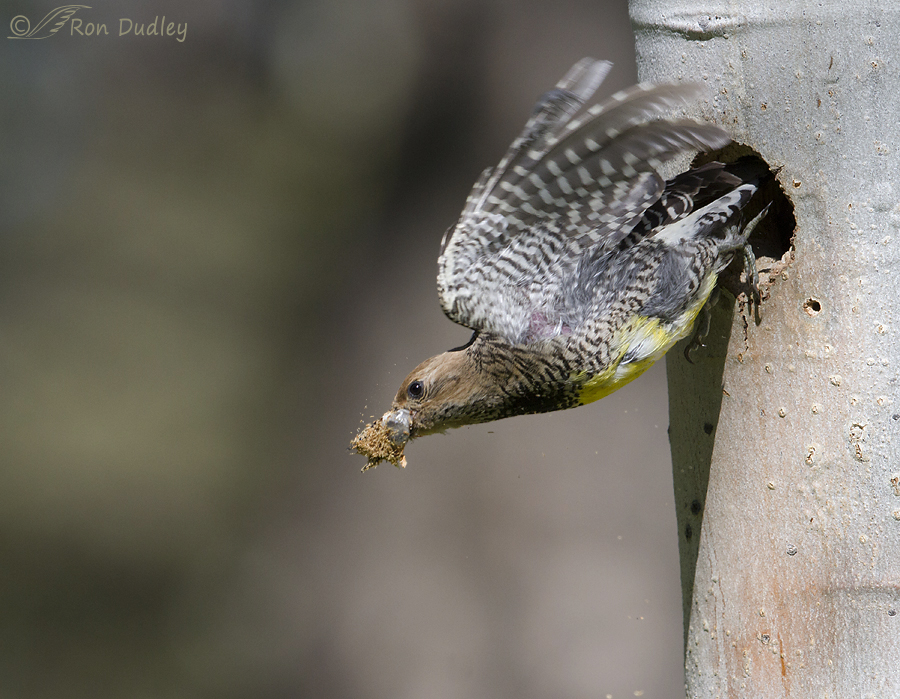
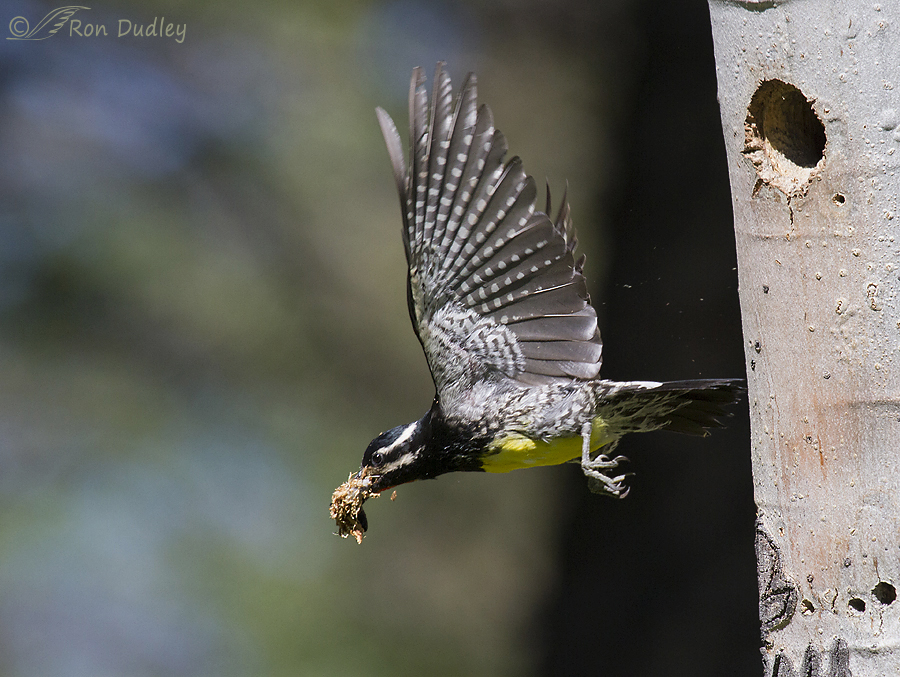
Great photos, Ron!
Absolutely fascinating.
This is a great series of shots. Love seeing the behavior documented so clearly. It’s good to know that they have found a shortcut for that probably less than pleasant task…
Marvelous magical shots that clearly demonstrate the housekeeping habits of these beautiful sapsuckers. Thanks so much for sharing them Ron! Such a great talent you are!!
Charlotte
I think you have the fastest index finger in the west – GREAT REFLEXES!
I can tell you know birds, Karen. Most folks have no idea just how quick birds are until they try to photograph them in action. Quick reflexes are an absolute must for the bird photographer.
Late to the party, but adding my chorus of gratitude for the education.
Parenting isn’t for the faint of heart. Or bill. In my far from educated way I wonder whether they are more diligent about clearing the nest than kestrels not so much on the hygeine front, but because they have more predators to fear? If the issue was simply cleaning the nest, the drag and drop technique would be sufficient. However, if you want to conceal the presence of the young from predatory noses and eyes then a longer trip is necessary.
Thanks Ron.
You can come late to my party any ol’ day, Elephant’s Child.
You could be right. One reference I saw says that accipiters take a heavy toll on Williamson’s Sapsuckers.
I had no idea they were so tidy! Wish owls (and, yes, kestrels) were as diligent. Babies often come into rehab crusted with fecal matter on their hocks, sometimes leaving sores.
Louise, I can imagine that would cause sores on their feet – uric acid is very strong.
So fascinating. I wish nature programs provided stills like this. You see so much more this way. Excellent learning method for me. Thank you so vet much.
I guess many folks don’t think “stills” are sexy enough for TV, Stephanie. Thank you.
Absolutely astonishing! I add my voices to the others here re what a wonderful learning tool your photos are. Thanks.
Thanks very much, Alison.
Absolutely fantastic photos! Ellen Wascou is right about you being the best teacher ever!
Interesting info! The inside of the kestrel boxes are a mass of pellets, fecal matter and left over food bits. I guess the kestrels are not as good at housekeeping…..
If anyone would know what the inside of a kestrel box looks like it would be you with all the work you do with them, Tana. I for one appreciate what you do. Thank you.
Amazing photos Ron. You always weave a terrific narrative with your art. Thank you !
Very nice of you to say so, John. Thank you.
What a great series of pictures. I would never have known exactly how they cleaned house!! I’ve seen nesting birds in bushes and trees where the parents remove materials or the chicks just lift their buts and ‘fire’ over the edge. Another great lesson in bird behavior by the best teacher ever!!!
That’s quite the compliment, Ellen. Thanks very much.